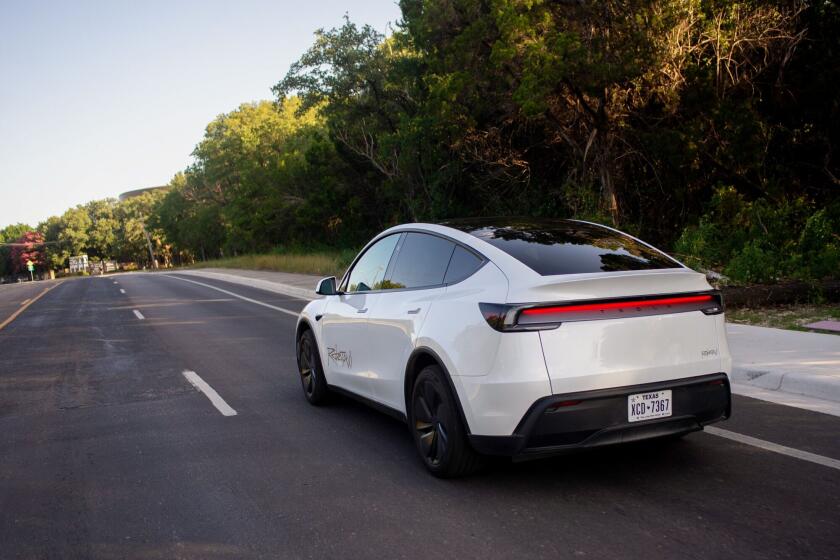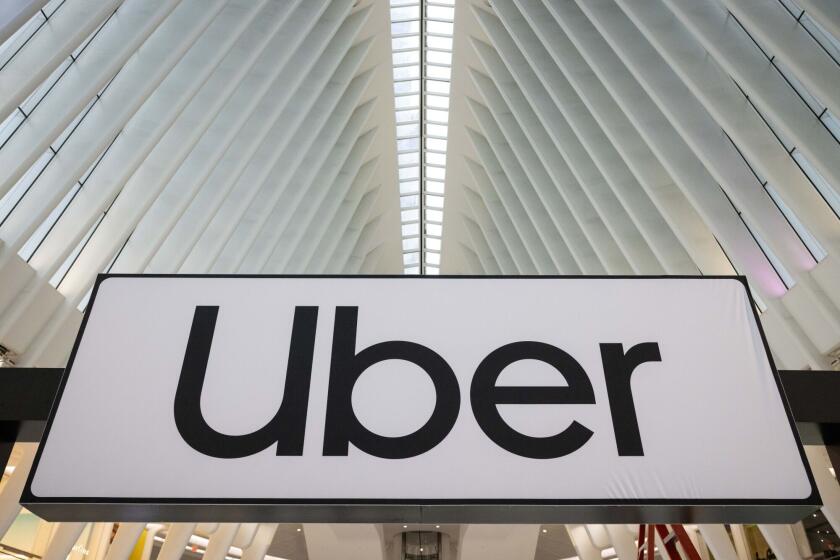Proposal for ‘Bullet’ Train Resurfaces : Transit: Abandoned six years ago, plan for San Diego-Los Angeles rail line may get a new life as state moves to endorse private projects.
- Share via
SACRAMENTO — Plans for a controversial “bullet” train between Los Angeles and San Diego may be revived because of the state’s new willingness to encourage massive private transportation projects, two members of the California Transportation Commission said Thursday.
Tom Hawthorne of San Diego and Ken Kevorkian of Los Angeles differed on what route would be used by any revived plan to whisk commuters between the state’s largest cities. Hawthorne said the most likely path was along the Amtrak corridor that roughly parallels Interstate 5, while Kevorkian suggested a “back door” approach between San Diego and Palm Springs.
But both said they believed some form of the high-speed project--abandoned six years ago because of community opposition--will be forthcoming in the next several years, especially in light of a similar project now being planned between Anaheim and Las Vegas.
“It’s not timely to do so now, but I certainly see it in the future,” said Hawthorne, adding that proponents would try to avoid any remaining stigma from the ill-fated first attempt. “We’re going to avoid using the words ‘bullet train.’ ”
The remarks by Hawthorne and Kevorkian came after testimony Thursday from Lawrence D. Gilson, former president of American High Speed Rail Corp., the defunct promoter of the bullet train. Gilson, now a consultant, briefed commissioners on the political, economic and media travails of the Southern California project.
Following the meeting, Gilson said he doesn’t know of any immediate plans to revive the project. He maintained, however, that “the economics and the requirements of the marketplace clearly dictate that this would be a very viable project now.
“I think it made good economic and marketing sense, and good public policy sense, when we were working on it in the early 1980s, and everything since them makes it more the case today,” he said.
Hard-pressed for cash and overwhelmed with demand, the state has decided to allow entrepreneurs to plan, design, build and operate private transportation projects in return for a negotiated profit. The first batch of projects under the infant “privatization” program were announced Friday--four toll roads, including one linking the Otay Mesa border crossing with California 125.
Last month, the California-Nevada Super Speed Train Commission designated a business consortium led by the Bechtel Corp. to plan the private, $5.5-billion railway that would send 265-m.p.h., magnetic levitation trains careening more than 300 miles from Anaheim to Las Vegas, via Barstow. The project has a 1998 completion date.
Kevorkian, who is also a member of the bistate commission, said business interests from Palm Springs are already pressuring the consortium to eventually draw up plans for an additional line that would lead from Anaheim, through the desert resort “and onto San Diego.”
He said such a “back door” link between Orange County and San Diego could easily grow to serve Los Angeles. The desert route would also skirt protests from environmentalists and coastal community activists who were opposed to the first bullet train proposal.
Hawthorne, however, said he expected renewed interest in private ventures using the current Amtrak line, where commuter demand between Los Angeles and San Diego is so high that the railroad turns a profit. Yet he cautioned that any future bullet train proposals were several years off.
In the meantime, Gilson urged the commissioners to learn from the first, ill-fated bullet train project as the state embarks on a new era of private transportation projects. Gilson’s firm said it could move 100,000 commuters a day on 117 trains speeding between Los Angeles and San Diego in an hour.
Gilson said any private transportation project must be backed by financial interests familiar with the distinctive lifestyle and needs of California.
“We recruited our U.S. bankers from New York,” Gilson said. “It quickly became quite apparent, however, that the New York banks have no idea what is going on in Southern California. As recently as five years ago, they simply did not accept that there is a downtown in Los Angeles. . . . We cannot be relegated to dealing with emissaries from elsewhere.”
Gilson said there was spotty local political support, an understatement of the vocal opposition from community groups and elected officials along the route. He added that, if only for investment sake, his firm refused to make political contributions “notwithstanding strong overtures, implied threats and our high visibility.
“Meanwhile, there was virtually no understanding by the local press of the very topics we are discussing here this morning,” Gilson told the commission. “Indeed, which the New York Times and the Wall Street Journal treated the project as a business story, the local papers never put the story on the business page. For them it was, first to last, a political story and only that.”
Despite the setback, Gilson said the private venture had advantages over a public equivalent. Those included non-competitive bidding from vendors willing to arrange their own financing; relief from “Buy American” requirements; and escape from political decisions on routes, schedules, fares and station stops.
He also expressed “optimism” that governments are becoming more willing to make private projects work.
More to Read
Sign up for Essential California
The most important California stories and recommendations in your inbox every morning.
You may occasionally receive promotional content from the Los Angeles Times.













